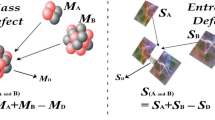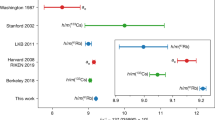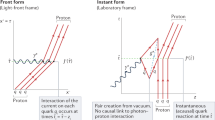Abstract
THE fundamental constants of physics, such as c the velocity of light, h Planck's constant, e the charge and m mass of the electron, and so on, provide for us a set of absolute units for measurement of distance, time, mass, etc. There are, however, more of these constants than are necessary for this purpose, with the result that certain dimensionless numbers can be constructed from them. The significance of these numbers has excited much interest in recent times, and Eddington has set up a theory for calculating each of them purely deductively. Eddington's arguments are not always rigorous, and, while they give one the feeling that they are probably substantially correct in the case of the smaller numbers (the reciprocal fine-structure constant hc/e2 and the ratio of the mass of the proton to that of the electron), the larger numbers, namely the ratio of the electric to the gravitational force between electron and proton, which is about 1039, and the ratio of the mass of the universe to the mass of the proton, which is about 1078, are so enormous as to make one think that some entirely different type of explanation is needed for them.
Similar content being viewed by others
Article PDF
References
Milne, Proc. Roy. Soc., A, 158, 324 (1937).
Author information
Authors and Affiliations
Rights and permissions
About this article
Cite this article
DIRAC, P. The Cosmological Constants. Nature 139, 323 (1937). https://doi.org/10.1038/139323a0
Issue Date:
DOI: https://doi.org/10.1038/139323a0



